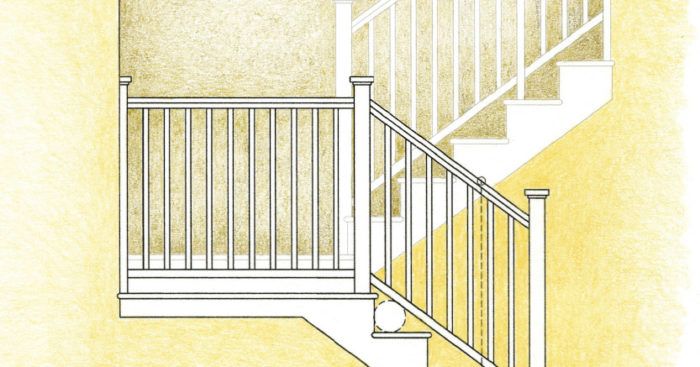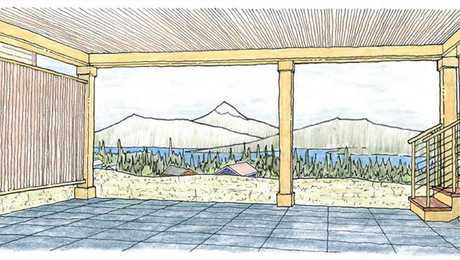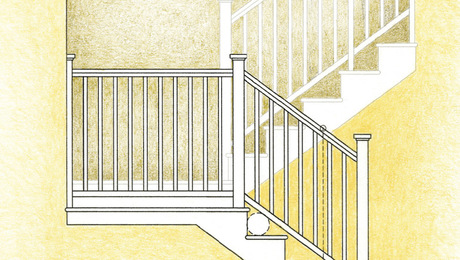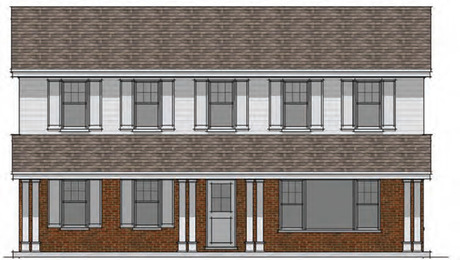Balustrades
If you can solve the geometry, spacing, and proportions of the balustrade along the rise and run of the stair, then the design for a level balustrade is a piece of cake.

There are two different types of balustrades: the level balustrade at a landing or along an open hallway or game room, and the pitched balustrade that protects the side of the stair. Many stairs have both, and both are opportunities to display some architectural detail while allowing light to filter down the stair.
From the designer’s perspective, the sloping balustrade is the one that’s harder to plan — and no doubt harder to build. The way I see it, if you can solve the geometry, spacing, and proportions of the balustrade along the rise and run of the stair, then the design for a level balustrade is a piece of cake.
Folks use terms such as railing or guardrail to mean balustrade, but it’s important to know that handrail and balustrade are two separate things in code parlance. A handrail is the part that you hold onto as you go up a stair. Often it is mounted to the wall with metal brackets. A balustrade is the entire assembly—newels, balusters, and rails—that protects the open side of a staircase or a balcony area open to the floor below. Depending on how the handrail code requirements are met on a particular project, a balustrade may or may not have a code-approved handrail attached to it or atop it (see “The minimums and maximums of balustrades,” below).
Accidents occur frequently on stairs, so building codes have strict rules regarding stair design and installation. Ascending and descending a stair safely requires a sure grip on a handrail and a strong balustrade to keep people from falling over the edge. In Austin, Texas, we use the 2012 IRC, so those are the rules I cite here. Your local code may be different, so be sure to talk to your building official if you have any questions about what is safe and acceptable.
Here are some examples of handrails and balustrades that make style statements while keeping safety the first priority.






























